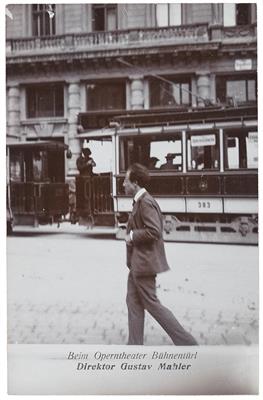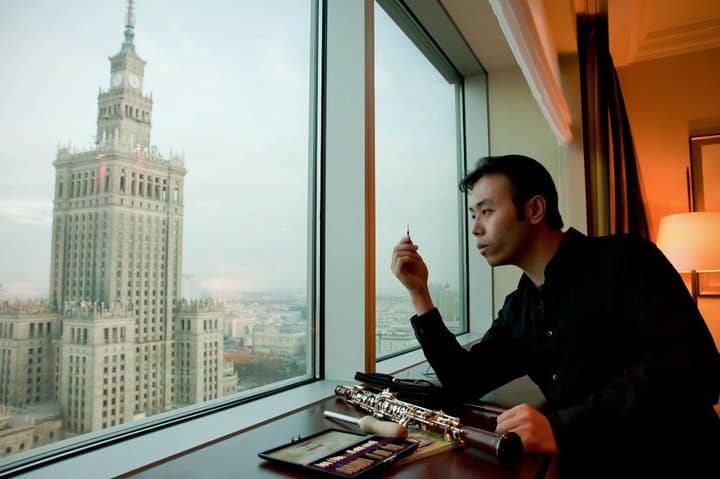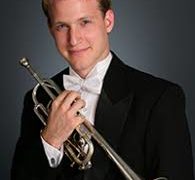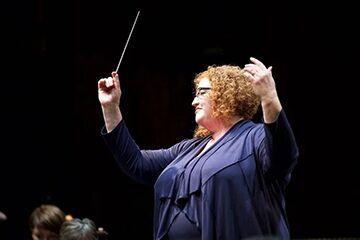When Mahler rewrote Beethoven
OrchestrasCapriccio Records has published a three-disc set of Beethoven scores that Mahler reorchestrated for particular performances.
‘Make it work!’ he once told Otto Klemperer of his own music. ‘If the acoustic is unsuitable, change the score.’
The recordings are of Symphonies 3, 5 7 and 9; the Coriolan and Leonore overtures; and the string Quartet, Op. 95.
The performers are Deutsche Staatsphilharmonie Rheinland-Pfalz, conductor Michael Francis.






Every reorchestration is necessarily an interpretation, but so is every choice of using modern instruments vs period instruments, and in that sense, a reorchestration (where you double the horns and double the winds) is nothing more than choosing more powerful instruments than what you currently have, if a horn could be invented to sound twice as loud and brilliant as modern horns, just as modern horns sound twice as loud as brilliant as period horns.
Mahler’s reorchestration is really just a technical adjustment of sound volume, which is achieved by other means by other conductors, just as Karajan insisting on recording in a church with a high reverb and engineering the sound with placement of mics and adjusting electronically at the studios of Deutschegrammophon.
The Mahler reorchestration needs period instruments, as per Mahler’s era, and to use the numbers Mahler orchestrated for. The current orchestra is a different animal. A new re orchestration would be required (or nothing required, depending on one’s point of view)
Very interesting and a breath of fresh air after years of a culture of playing these masterpieces exactly as written, no matter what.
Cue the cowbell jokes….
Someone should slip these into a performance unannounced and see if the audience detects a difference.
Michael Cooper reported in a 2018 NY Times article about the NY Phil archive, that it includes “the score of Beethoven’s Seventh Symphony, dramatically marked by Gustav Mahler in 1909. In 1929, Arturo Toscanini, reviewing the score, was indignant at the Mahler revisions and expressed his disapproval by writing on the score that his predecessor’s changes were ‘unworthy of such a musician.’”
Toscanini knew whereof he spoke. It would have been so much better had no one recorded these indiscretions “unworthy of such a musician”!
According to The Old Man’s son-in-law, Horowitz, even he made changes in Beethoven’s scores, for clarity or reinforcement, and nobody ever really noticed.
For me, one should always double the woodwinds in Beethoven
Or halve the strings.
Indeed: with a small string section B’s music can still sound truly great, in a hall which is not too big.
The difference between great and big.
Here is the Eroica on period instruments in a hall comparable to the one in which the world premiere took place:
https://www.youtube.com/watch?v=0WzsRVQQFmY
And yet Toscanini didn’t play pure, untouched Beethoven himself. There’s a myth that playing only what the composer wrote was Toscanini’s legacy. Debussy’s La Mer, Tchaikovsky’s Manfred and many other works were “improved” by the Italian.
Excellent idea.
A few of the Mahler versions have already been recorded. They were interesting, especially the 9th. But I’m looking forward to this new set which will have the advantage of better sound than the Bridge recordings – I hope.
What modern advocates of these “retouchings,” as they were usually called at the time, usually forget is that they are integral to other aspects of early 20th century orchestral performance. Things such as orchestral layout (Francis’ is authentically Mahlerian) and extensive portamenti in the string playing (not evident in the video) go hand in hand with the most important: use of short-term
tempo modifications — usually not written into the scores — to shape phrases or set off changes in sonic texture. Today these would be considered “mannered.” Francis seems not to indulge in these, unfortunately. Mahler’s own works contain warnings to the conductor (e.g. don’t rush, always the same tempo) as if he were expecting tempo inflections would normally be applied. Even Mahler’s contemporary composer-conductor rival, Felix Weingartner (who today has a purist reputation), supported retouchings (as covered in his Beethoven book) but he had little patience with the “little Bulows” and their tempo modifications. I am still awaiting fully Mahlerian, tempo-bending performances of his retouchings of Beethoven and Schumann.
Then I heartily recommend listening to my performances with the Kuopio Symphony Orchestra on their YouTube channel. I am already deep into the thicket of Neudeutsche Schule tempo modifications and tempo rubato, string portamenti and retouchen in my performances. There’s a Beethoven 5th as well as a Bruckner 4th in the 1888 version (which I freely retouched according to the 1878/1880 version).
I look forward to exploring those videos. When you get to Bruckner 8 I hope you do the first published version (1892). Its now-derided publisher-added tempo inflections might actually reflect period performance practice. See the note I left for this score at IMSLP.
I might add that judging Mahler’s retouchings from recordings, especially those engineered by “Tonmeisters” and employing multiple microphones (as the video clearly shows in many shots) is a questionable practice. The usual Tonmeister goal is to optimize the recording for playback over domestic loudspeaker systems, which is not necessarily the same thing as trying to sonically recreate the sound of an orchestra in a hall — the sound that Mahler was optimizing in his retouchings. The mere “balancing” of the multiple microphones in the mix is a creative act that, sonically, is tantamount to a retouching. The results may sound “good,” but where that goodness originates cannot be definitively assigned to Mahler. Another case that can be cited is the alleged “clarity” of Boulez’s orchestral recordings. As I hear them that clarity is at least 50% Tonmeister-derived.
Agreed about the multi-mic nightmare. That’s why I am working to record with fewer mics, as close to natural and acoustic as possible.
As I understood it, Francis only used Mahler’s retouches concerning balance and volume. These are essential, not the 1900-style mannerisms.
Generally I understand Mahler just added more winds and brass. Whether that’s doubling or writing new parts, I’m not clear. But why not?
Now could someone do that for Schumann? I like his symphonies but it’s like eating mashed potatoes to listen to them.
Mahler did re-touch Schumann. Any competent modern conductor can balance Schumann well enough that no fiddling with the scoring is needed. But if you really want to hear everything, seek out the best performances on period instruments.
In Schumann he also changed note, for what I know, at least in opening fanfare of the First Symphony, giving the horns other notes for better harmonic fit
Doubling of winds in tuttis, to get a better balance with a large string session.
There are two timpani in the first movement of the 9th in Mahler’s reorchestration.
Compared with what Stokie did to various works, Mahler’s retouchings were merely a scintilla.
This sort of thing was common in past centuries. Handel did it all the time with his own music but sometimes he also insisted on singing the notes as written, like when Cuzzoni refused to sing her big number in rehearsal he threatened to throw her out of the window.
Mozart’s reorchestration of Messiah is quite substantial. Besides adding winds and brass he also changed soloists including assigning “Rejoice greatly” to a tenor, as well as composing 1 new aria and 1 new chorus.